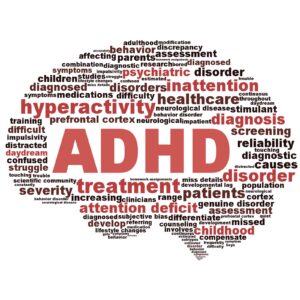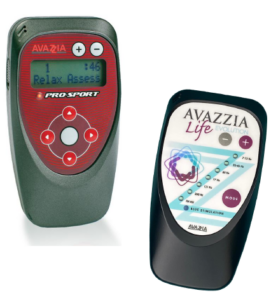
Do you feel frustrated by constant forgetfulness, lack of focus, disorganization, and fatigue? If so, ADHD may be to blame. Many people go their entire lives thinking these problems are simply unfavorable personality traits, but we’re here to support you in exploring the root cause.
In this blog, we will discuss:
- The cause of ADHD
- Three surprising facts about ADHD that may change the way you look at this condition
- The top 10 symptoms of ADHD in adults and children
- The problem with ADHD drugs
- How microcurrent neurofeedback can alleviate ADHD symptoms
- And more…
If you’ve avoided treating your (or your child’s) ADHD because you want to avoid potent drugs, we’re here to let you know a natural option exists – neurofeedback. Read on to learn about a revolutionary treatment that could flip the switch on ADHD symptoms once and for all.
ADHD: A Growing Problem
Attention-Deficit/Hyperactivity Disorder, or ADHD, is estimated to affect up to 9% of all children and 4% of adults worldwide – and that number is only growing. A study examining 20-year trends in ADHD diagnosis backs up this idea – researchers saw a “significant” increase in ADHD amongst children between 1997 and 2016. So, what’s to blame for this increase? Some authorities blame environmental changes, the industrial food system, and chemical exposure, which all affect prenatal development.
No matter the cause, an immense need for a holistic treatment for this all-too-common condition has presented itself, and we believe that neurofeedback is the solution.
What Causes ADHD?
The exact cause of ADHD is unknown, but researchers agree that the following factors could contribute to the condition.
- Genetics. Decades of research has shown that genetics plays a crucial role in ADHD, with a high heritability of 74%.
- The Gut. Studies have demonstrated that certain chemicals, called neurotransmitters, work differently in adults and children with ADHD. It is thought that differences in the gut microbiome may cause variations in the brain-gut axis, affecting neurotransmitter levels.
- The Nerves. Differences in how nerve pathways work are also common in ADHD, with certain parts of the brain being less active or smaller in children with ADHD than those without.
- Dopamine. The brain chemical dopamine may also play a role in ADHD. Dopamine transmits signals between the brain and nerves linked to movement, mood, attention, sleep, and learning.
Risk factors for developing ADHD include major head injuries, being born prematurely, prenatal exposure to nicotine or alcohol, exposure to toxins (like lead) in the environment, and exposure to EMFs. A study conducted in 2008 found that behavioral problems like ADHD were more likely to occur in children who had prenatal or postnatal exposure to cell phone use and EMFs.
3 Surprising Facts About ADHD
ADHD is widely studied, yet there are some interesting facts about this condition you may not be aware of:
- Females are less likely to be diagnosed with ADHD than males, with 13% of men diagnosed with ADHD and just 4.2% percent of women diagnosed in their lifetime.
- ADHD symptoms often appear between the ages of three and six years old.
- The average age ADHD is typically .
ADHD Can Affect Us All
It’s important to remember that ADHD is not just a childhood disorder. According to some estimates, up to 4% of adults are diagnosed with this condition. Many adults live their entire lives unaware that they have ADHD because the symptoms mimic other common disorders (like anxiety and depression), leading to a misdiagnosis. Because stimulant medications for ADHD are classified as Schedule II controlled substances, doctors are cautious when diagnosing ADHD (especially in adults), leading to instances of disbelief and Doc Blocking.
Symptoms of ADHD in Children and Adults

The symptoms of ADHD in adults and children look quite similar, with some variation. For example, in adults, hyperactivity may appear as severe restlessness or anxiety surrounding their job. In children, it might look like running around the house for hours on end.
The ten most common symptoms of ADHD in adults and children:
- Disorganization
- Fatigue
- Fits of rage
- Forgetfulness
- Impulsivity
- Lack of focus or motivation
- Poor self-image
- Poor time management skills
- Relationship issues
- Restlessness and/ or anxiety
These symptoms can often go undiagnosed for decades, especially in women who are socially conditioned to mask their symptoms in an effort to please others. In fact, it’s estimated that a shocking 50-75% of women and girls with ADHD go undiagnosed – leading to an isolating life of “silent suffering” and unacknowledged struggles.
The Potential Problem With Conventional ADHD Treatment

Most conventional ADHD medications are considered “stimulants.” These drugs carry several dangerous side effects like increased blood pressure and a faster heart rate. If you have a preexisting heart condition, ADHD meds can be a risky treatment option and should be avoided.
Other potential side effects of stimulant ADHD drugs:
- Abuse and addiction
- Heart disease
- High blood pressure
- Irregular heartbeat
- Poor sleep habits
- Psychiatric problems like bipolar disorder
- Seizures
- Symptoms of psychosis
- Skin discoloration
If you have an allergy or sensitivity to stimulants, have glaucoma, a history of mental illness, liver disease, kidney disease, Tourette’s syndrome, or an overactive thyroid, stimulants should be avoided. An alternative treatment, like neurofeedback, may be a safer choice that you should discuss with your doctor.
For many people, the benefits of ADHD medication outweigh the risks, and if they work for you – there is no reason to stop taking them if your doctor deems them safe. If you are happy with your current medication, we would like to suggest trying neurofeedback to complement conventional treatments (like pharmaceuticals) to maximize their efficacy.
How Does Microcurrent Therapy and Neurofeedback Alleviate ADHD Symptoms?

Microcurrent neurofeedback is a nonmedicinal, non-invasive route to optimize brain performance. It works by encouraging the brain to reorganize and balance itself. The result? And improvement in symptoms of traumatic brain injury, PTSD, anxiety, depression, and yes – ADHD.
How does it work? Microcurrent neurofeedback for ADHD triggers brief stimulation to the nervous system, resulting in a temporary fluctuation in brainwaves, allowing the brain to essentially “reset” itself (think: rebooting a computer). After treatment, the patient’s brain will be wired in a way that promotes the development of new neural pathways, which allows them to create new, healthier habits, become more resilient and grounded, and break free from troubling behaviors that are linked to ADHD like impulsiveness, anger, and anxiety.
Not all microcurrent devices on the market are capable of conducting neurofeedback. We are pleased to announce that the following devices, available at our online store TheSanaShop.com can help you perform this game-changing treatment right from the comfort of your own home.
Avazzia microcurrent devices capable of neurofeedback:
Neurofeedback for ADHD in Children – Is it Safe?
We would first like to say that microcurrent therapy is a safe treatment for children of all ages. We have had great success in treating children with CRPS, chronic pain, ulcerative colitis, hydrocephalus, Autism, ADHD, and much, much more.
Neurofeedback for ADHD in children is a highly researched medical treatment. Several studies have found this treatment to not only be safe, but effective in the treatment of childhood ADHD.
Please review the research to support the efficacy of neurofeedback for ADHD in children by clicking the links below:
| Outcome of Study | Link to Study |
| Improvement in mental functions and accuracy | Click here |
| Improvement in attention, hyperactivity, and distraction | Click here |
| Improvement in the effects of ADHD | Click here |
| Improvement in effects of ADHD | Click here |
Learn if Neurofeedback for ADHD is Right for You or Your Child
If you would like to speak with Dr. Rob Vanbergen about using one of our microcurrent devices to perform neurofeedback for ADHD, we welcome you to reach out! He or another member of our capable team is happy to help you determine if this treatment is right for you, and if so – they will help you get started that day. If ADHD has been a burden in you or your loved one’s life, we encourage you to act immediately. You shouldn’t have to waste one more day with the hardships of this all-too-common and completely treatable condition.
Schedule a Free Consultation Today
Sources cited:
- Genetics of attention deficit hyperactivity disorder – PubMed (nih.gov)
- Case-Control Study of the Effects of Gut Microbiota Composition on Neurotransmitter Metabolic Pathways in Children With Attention Deficit Hyperactivity Disorder – PubMed (nih.gov)
- Twenty-Year Trends in Diagnosed Attention-Deficit/Hyperactivity Disorder Among US Children and Adolescents, 1997-2016 | Adolescent Medicine | JAMA Network Open | JAMA Network
- Gene Study of ADHD Points to Defects in Brain Signaling Pathways | Children’s Hospital of Philadelphia (chop.edu)
- Does My Child Have ADHD? Online Tool to Test ADHD Symptoms in Children (webmd.com)
- [PDF] Prenatal and Postnatal Exposure to Cell Phone Use and Behavioral Problems in Children | Semantic Scholar
- NIMH » Attention-Deficit/Hyperactivity Disorder (nih.gov)
- ADHD in Women 101 | Kaleidoscope Society
- https://pubmed.ncbi.nlm.nih.gov/8833315/
- https://pubmed.ncbi.nlm.nih.gov/17356905/
- https://www.tandfonline.com/doi/abs/10.1080/10874208.2010.501514
- https://www.nasa.gov/topics/technology/features/mindshift.html





